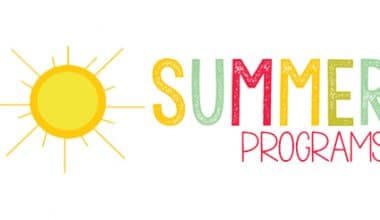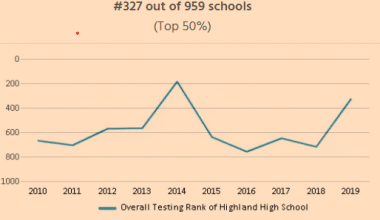Note-taking (sometimes written as notetaking or note-taking) is the practice of recording information from different sources and platforms.
By taking notes, the writer records the essence of the information, freeing their mind from having to recall everything.
Notes are commonly drawn from a transient source, such as an oral discussion at a meeting, or a lecture (notes of a meeting are usually called minutes), in which case the notes may be the only record of the event, but note-taking software has made digital notetaking possible.
Therefore, we’ve put down how you can take study notes in class,
Why Should I Take Note In Class?
taking study notes for class is an important skill for students, especially at the college level. In some contexts, such as college lectures, the main purpose of taking notes may be to implant the material in the mind, the written notes themselves being of secondary importance.
Many studies have been able to show that note-taking in college students has helped them become more engaged in the lecture and allowed them to better comprehend the material.
Even when students fail to return to their notes and study them, they have shown higher test scores and better comprehension when they take notes versus not taking notes.
The difference is even more significant when the notes are handwritten and reworded rather than merely transcribed or typed. Taking good notes in class is an important part of academic success in college.
Actively taking notes during class can help you focus and better understand the main concepts. In many classes, you may be asked to watch an instructional video before a class discussion.
Good note-taking will improve your active listening, comprehension of material, and retention. Taking notes on both synchronous and asynchronous material will help you better remember what you hear and see.
Functions of Taking Note in Class
According to experts, taking study notes in class has two primary functions:
- It keeps you alert, attentive, and accountable as you listen
- The notes themselves become a record of what was said in lecture or discussion that can be used later for studying and review (Seward, 1910).
According to Hartley & Marshall (1974) students who take notes experience increased attention and concentration in class (as cited in Cuseo, Fecas & Thompson, 2007).
In addition, writing during class and reviewing notes before tests produces better recall which is important to your performance on exams (Kiewra, 1985).
When evaluating your own note-taking strategies, ask yourself if you’re achieving those two primary functions. If you aren’t, consider ways you could alter your strategies to be more effective.
Read this; TIPS ON HOW TO STUDY FOR NURSING SCHOOL
Strategies To Be More Effective In Note-Taking
Firstly, you do not need to write down everything. This is a mistake many students make. Then there’s the issue of not writing enough or as robustly.
As much as we’d like to think we will remember what a teacher or instructor on a video meant, or what those measly dot points mean, most of us don’t have a memory that recalls everything.
And when it comes to textbooks and notes prepared by your teacher, it may feel like overkill to make your own notes, but you really should.
It’s important to keep in mind the different levels of note-taking.
Surface-level note-taking involves writing down the words you hear but not really paying attention to the meaning or topic; this might be similar to a court reporter taking a transcript of a trial: they record information but may not be personally processing it (Anderson & Armbruster, 1991). In comparison, as you seek to be effective in your note-taking.
How To Take Study Notes For Class
Below is information on how to take study notes for class.
To get the most out of the practice, you should aim for meaning-based note taking which is characterized by thinking and processing what’s being said.
Rather than trying to write down every single word that you hear, you listen to the lecturer and begin to make connections and form your own understanding of what’s being presented; you write down in your own words what’s being discussed.
This level of note-taking is ideal for the classroom lecture when you listen for main ideas, make inferences, and identify question areas.
Systems and Formats
Many different formats are used to structure information and make it easier to find and understand later. The format of the initial record may often be informal and/or unstructured.
One common format for such notes is shorthand, which can allow large amounts of information to be put on paper very quickly.
Historically, note-taking was an analog process, written in notebooks, or other paper methods like Post-It notes.
In the digital age, the use of computers, tablet PCs, and personal digital assistants (PDAs) are common.
The note taker usually has to work fast, and different note-taking styles and techniques try to make the best use of time.
The average rate of speech is 2–3 words per second (which is 120-180 words per minute), but the average handwriting speed is only 0.2–0.3 words per second (which is 12-18 words per minute).
Format
Regardless of the medium, note-taking can be broadly divided into linear and nonlinear methods, which can be combined.
Linear note-taking is the process of writing down information in the order in which you receive it. Linear note-taking is quite a common means of taking notes, however, the potential to just transcribe everything that is being said or on the presentation slide is quite high.
Outlining is one of the most common note-taking systems. Notes and thoughts are organized in a structured, logical manner, reducing the time needed to edit and review, allowing a lot of information to be digested in a short period of time.
Outlining is less effective for classes that involve many formulas and graphs, like mathematics or chemistry.
Computerized note-taking, whether with a word processor, outliner software, or a digital notebook program such as OneNote, Evernote, or TiddlyWiki, allows note-takers to revise easily and add more entries or rows to the outline.
Regardless of the system used, it can be best to focus on writing down the most important information first.
Preparing To Take Good Notes In Class
The first step to taking good notes in class is to come to class prepared. Prepare your brain for its information intake.
When you read and take notes before you go to class, it primes your brain for the content you’ll encounter in lectures. You can develop questions about what’s unclear, or what you want to know more about, etc.
All of this allows you to anticipate the lecture and make connections between what you’ve read and what you’re hearing, and fill in gaps.
Here are some steps you can take to improve your note-taking before class even begins:
- Preview your text or reading assignments prior to lecture. Previewing allows you to identify main ideas and concepts that will most likely be discussed during the lecture.
- Look at your course syllabus so that you know the topic/focus of the class and what’s going to be important to focus on.
- Briefly review notes from previous class sessions to help you situate the new ideas you’ll learn in this class.
- Keep organized to help you find information more easily later. Title your page with the class name and date. Keep separate notebook sections or notebooks for each class and keep all notes for each class together in one space, in chronological order.
Note-Taking During Class
Now that you are prepared and organized, what can you do to take good notes while listening to a lecture in class? At times, instructors will post lecture notes or PowerPoint slides on Canvas or the class website prior to class.
If you print these out, then you can write your notes directly into the slides. You’re not writing down what’s already there; rather, you’re trying to capture new information from the lecture.
Pay close attention to the entire lecture. Listen for main ideas, relationships between concepts, and examples.
Actively think about what you’re hearing and make choices about what to write down in your notes. Why is the instructor choosing the examples they do? How do the different parts of the lecture all connect? What’s the point?
Also, check this: How to Write a Conclusion for a Research Paper in 2022
How To Improve Your Note-Taking
Here are some practical steps you can try to improve your in-class note-taking:
Step 1:
If you are seeking conceptual information, focus on the main points the professor makes, rather than copying down the entire presentation or every word the professor says. Remember, if you review your notes after class, you can always fill in any gaps or define words or concepts you didn’t catch in class.
Step 2:
If you are learning factual information, transcribing most of the lecture verbatim can help with recall for short-answer test questions, but only if you study these notes within 24 hours.
Step3:
Record questions and thoughts you have or content that is confusing to you that you want to follow-up on later or ask your professor about.
Step 4:
Jot down keywords, dates, names, etc. that you can then go back and define or explain later.
Step 5:
Take visually clear, concise, organized, and structured notes so that they are easy to read and make sense to you later. See different formats of notes below for ideas.
Step 6:
If you want your notes to be concise and brief, use abbreviations and symbols. Write in bullets and phrases instead of complete sentences. This will help your mind and hand to stay fresh during class and will help you access things easier and quicker after class. It will also help you focus on the main concepts.
Step 7:
Be consistent with your structure. Pick a format that works for you and stick with it so that your notes are structured the same way each day.
Step 8:
For online lectures, follow the above steps to help you effectively manage your study time. Once you’ve watched the lecture in its entirety, use the rewind feature to plug in any major gaps in your notes. Take notes of the timestamps of any parts of the lecture you want to revisit later.
Determining What’s Important Enough To Write Down
You may be asking yourself how you can identify the main points of a lecture. Take notes on assignments and exam information.
If the lecture includes any discussion of expectations for an assignment or exam, this is important information to write down.
The information may not be included on a formal assignment description or on Canvas, or there may be an additional detail that will be helpful for you to think about.
Tips
Here are some tips for recognizing the most important points when taking study notes in a lecture:
- Introductory remarks often include summaries of overviews of main points.
- Listen for signal words/phrases like, “There are four main…” or “To sum up…” or “A major reason why…”
- Repeated words or concepts are often important.
- Non-verbal cues like pointing, gestures, or a vocal emphasis on certain words, etc. can indicate important points.
- Final remarks often provide a summary of the important points of the lecture.
- Consider watching online lectures in real-time. Watching the lecture for the first time without pausing or rewinding can help force you to focus on what’s important enough to write down.
By going into your notes and turning them into something new, you’re asking yourself to make connections, to continue to put information into your own words, and to identify gaps in your understanding and the information you’ve taken down.
Revisit your notes and their information. After class is over, spend time revisiting, rewriting, transforming, and/or studying your notes. Add to your notes information from the book/videos/discussion boards. If you meet with peers to study, connect with them about their own notes, as they may have written something down that you missed and vice versa.
Conclusion
At the end of each class notetaking, evaluate your notetaking. Compare with other students, check-in with the instructor, and try to use your notes to teach someone the material.
If your notes don’t seem effective when you revisit information or are studying later, revise your note-taking strategy.
In addition, I hope this article on how to take study notes for class has given an idea of how to go about your note-taking
References
- https://en.wikipedia.org/wiki/Note-taking
- Success – Learning
- https://algonquincollege.libguides.com/studyskills/taking-notes
- Willamette – Study Strategies
- Mordoch – Effective act of note
- Learning center – tips and tools
- https://www.oxfordlearning.com/5-effective-note-taking-methods/
Recommendations
- Types Of College Classes And Courses To Take
- TIPS ON HOW TO STUDY FOR NURSING SCHOOL
- 15 Best Math Classes Online for Beginners and Advanced | 2022
- How to Write a Conclusion for a Research Paper in 2022
- 20 Must-Have College Packing List For Girls In 2022
- How to Write MLA Citation: Format your Documents in these Simple Steps
DISCLOSURE: This post may contain affiliate links, meaning when you click the links and make a purchase, we receive a commission.






1 comment
Comments are closed.